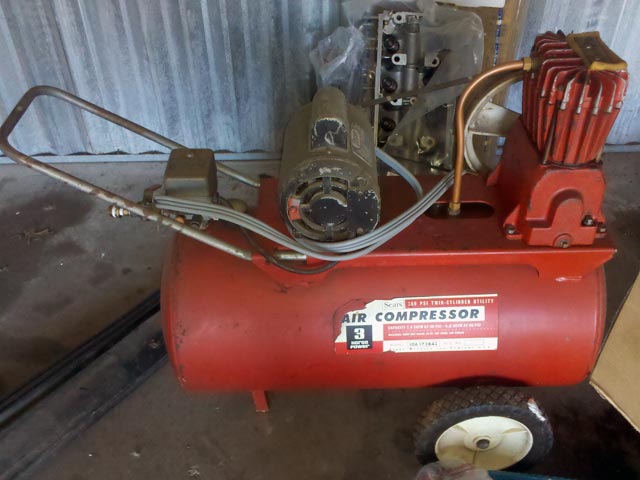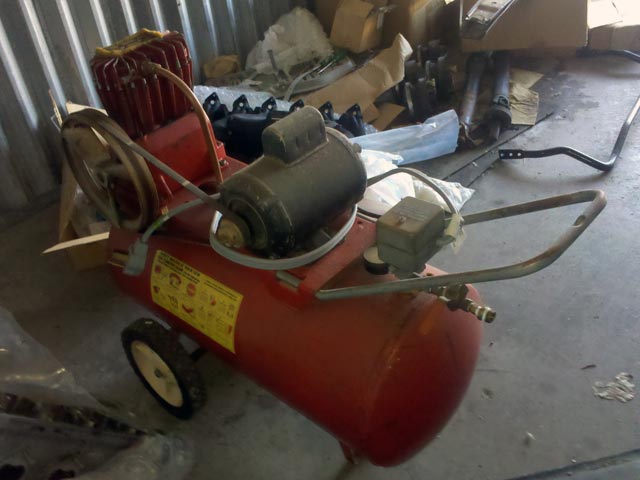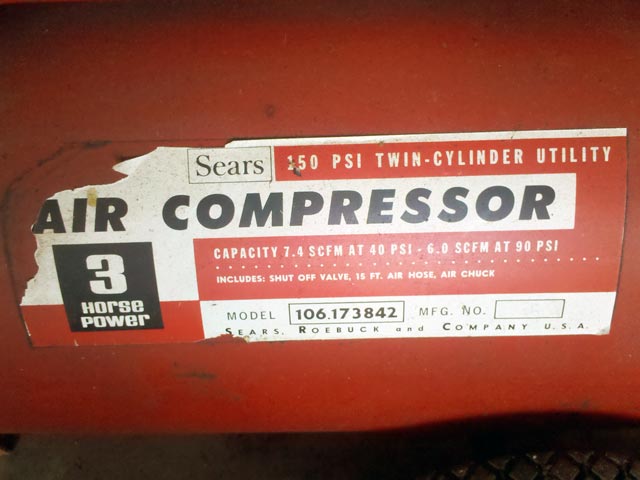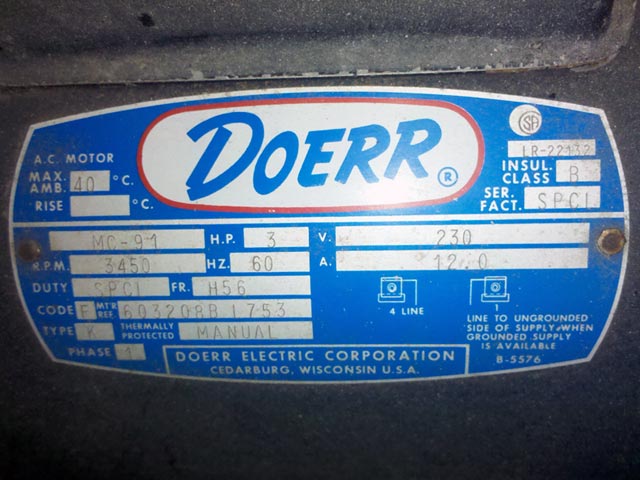
Runs on 220V, which makes it problematic to use since those outlets are difficult to come by in a typical garage. Vintage would be late 60s or early 70s. It was found on the side of the road, burnt out from the connection between the tank and compressor blowing out while the thing was unattended, which caused the unit to overheat and destroyed the compressor rings. My dad and his friend found it, got the parts from Sears, honed the cylinders and re-ringed it.
It has seen usage on and off over the past 40 or so years in our household. It never got regular use due to the issues associated with not having a 220V power outlet in the garage.
It's entirely in working order right now, no issues. Anybody have any idea what the value on something like this might be? It's obviously no collector's item, but it's a tool and it works, so I figure it must have some sort of value. There's no space for it at the moment, so it's got to go even though I'd much rather sell the cheapo upright compressor that dad has in the garage now, but that's another story.
Jeremy
EDIT: Changed the picture to the actual compressor in question.





